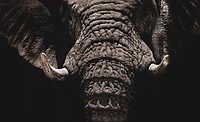In a new report by the International Fund for Animal Welfare (IFAW), online investigators uncovered nearly 1,200 advertisements for close to 2,400 animals, parts, derivatives or products of threatened species despite current protections under the U.S. Endangered Species Act (ESA) and the Convention on International Trade in Endangered Species of Wild Fauna and Flora (CITES). The report, entitled Digital Markets: Wildlife Trafficking Hidden in Plain Sight, details the findings following a six-week investigation of advertisements posted on 34 U.S.-based online marketplaces.
Of the three most common types of advertisements found:
- Nearly half (44%) were identified as elephant ivory, a decline from 2008 levels (73%). 34% of ivory advertisements claimed that their product was exempt from existing elephant ivory regulations.
- Over one-quarter (27%) of all advertisements were for trophies and taxidermy products, including skins, skulls, claws or other animal parts primarily for display, half of which were for species only found in the wild outside of the U.S. (giraffes, African lions, caracals and several primate species).
- Live animals to be sold as exotic pets made up 19% of total advertisements, with birds, reptiles and mammals (44%, 40%, and 16% respectively) comprising the bulk of live animals sold. Live animals tended to be of higher value, with nearly three fourths of the advertisements for protected wildlife species valued at $10,000 or higher.
The report is a follow-up to the 2008 report "Killing with Keystrokes," representing a continuation of IFAW’s work to both monitor and shut down online wildlife trafficking. Their work includes collaborating with online marketplaces to improve their policies to reduce wildlife trafficking, implementing trainings of government enforcement officers on the latest techniques and trends for detecting trafficking, working with communities to reduce poaching and ultimately reducing demand. Report comparisons show that the demand for live turtles, tortoises, wild cats and primates has proliferated since 2008.



